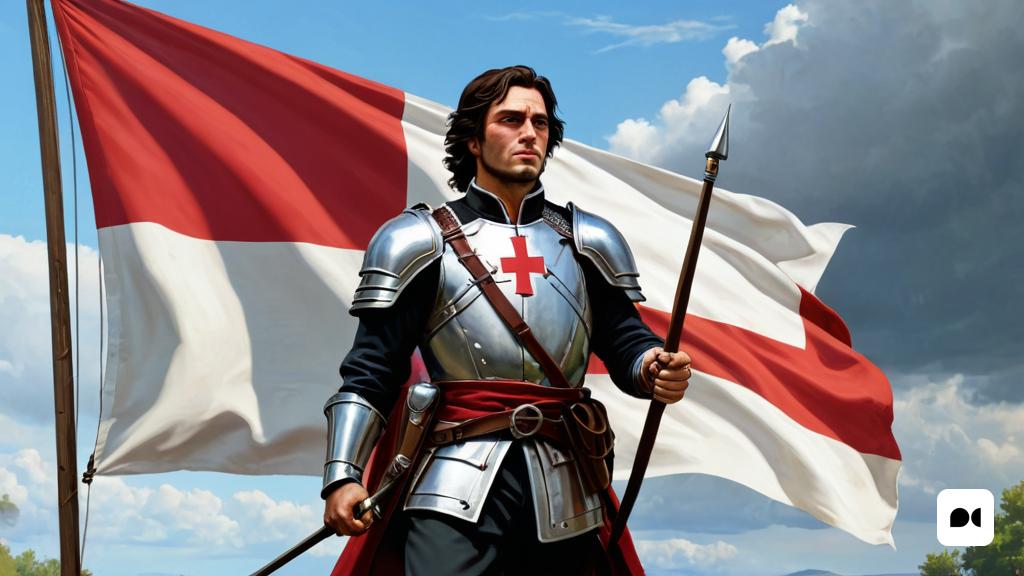Origins of Carlism
The terms ‘Carlismo’ and ‘Carlí’ emerged between 1823 and 1833, after the end of the Liberal Triennium and the establishment of the second absolutist restoration under the reign of Ferdinand VII. During my childhood, I did not know the word ‘carlina’, but I did know the word ‘requeté’. I recognized the traditionalists by their white flag marked with the red cross of Burgundy, which I always saw next to the red and yellow flag with its eagle and the red and black flag with bows and arrows, symbols of Francoism. Over time, I learned that the term ‘requeté’ probably comes from an onomatopoeia associated with the militias known as ‘tercios’.
The Fight for the Throne
The death of Ferdinand VII in 1833 caused his brother, Infante Carlos María Isidro, to claim the throne under the name of Carlos V, rejecting the ascension of his niece Isabel to power in Spain. This disputed transition marked an important milestone in the history of Carlism.
Analysis by Jordi Canal
The historian Jordi Canal has stood out as a deep connoisseur of the Carlist phenomenon and a disseminator of its history full of ups and downs and ruptures. In his recent work ‘God, Country, King’ (Silex), he examines the influence of his ideals on the Spanish civil wars over a century. According to Canal, this ideology showed a notable degree of inconcretion, which allowed the coexistence of very diverse social sectors and varied positions, which united against common enemies, regardless of whether their confrontation led to a civil war, one of the most lethal forms. and destructive conflict.
The Carlist Civil Wars
Throughout the 19th century, Carlism was involved in a long series of civil wars. There were significant clashes between 1833 and 1840, and between 1846 and 1849, especially in Catalonia, where the attempt was made to crown Charles VI, son of Charles Maria Isidro. Finally, another stage of struggle took place between 1872 and 1876, with the pretender Charles VII, grandson of Charles Maria Isidro. However, none of these restoration attempts were successful.
Division of Spain
During these confrontations, two antagonistic Spains were formed, where the Carlists fought for a set of principles that sought social restoration rather than for a throne or a dynasty. This fight took place in a climate of desperation and anger, which destroyed the fundamental will for harmony among the Spanish. The imposition of the Cánovas Restoration system was not accepted either. The catastrophe of 1898, with the loss of Cuba, Puerto Rico and the Philippines, forced a reconsideration of the relations between Spain and its former territories of the Catholic Monarchy.
Literary and Cultural Contributions
Jordi Canal also stands out for his extensive literary knowledge, particularly about the famous ‘National Episodes’ by Benito Pérez Galdós. Galdós, who was a liberal deputy for Guayama for four years, portrayed the Carlist currents with great restraint.
Loredan’s Dream
A chapter that stands out in ‘God, Country, King’ is ‘Loredan’s Dream’. In 1882, Charles VII, who was considered the legitimist, received a palace in Venice called Loredan from his mother. From there, Carlism sought to spread and orient itself towards America. This gave rise to a town in Argentina for Carlists, as well as another called Villa Pío Décimo. In Latin America, several magazines were published with names such as ‘La Regencia Española’, ‘El Tradicionalista’ or ‘La Bandera Blanca’. A notable newspaper was ‘El Legitimista Español’, published in Buenos Aires, which published 174 issues between 1898 and 1912. Carlos VII even had a street in Argentina that in 1961 changed to street 152.
The Legacy of Francisco de Paula Oller
An essential role in these projects was that of the Barcelona jurist Francisco de Paula Oller, who founded in Argentina, in 1915, the magazine ‘España’, organ of the Traditionalist Communion. This publication had to close in 1929, and Oller did so with words that reflect his commitment: “I put God as witness that we have worked for the Cause and the Person for more than half a century.”
Cultural and Social Influence
In 1939, thanks to the film ‘Gone with the Wind’, based on a work by Margaret Mitchell, Scarlett O’Hara’s famous phrase became popular: “I take God as my witness that I will never go hungry again.”
Conspiratorial Visions
Luis María de Llarder, leader of Carlism in Catalonia, expressed in his writings delirious connections between Judaism and Freemasonry, stating that “Freemasonry is an arm (…) To what body will this arm be attached? To Judaism; of which Satanism is the head that drives or inspires it.” In another of his texts, he maintained that “liberal Spain has always favored Freemasonry, like its daughter, because it has helped it in the great work of demolishing Catholicism in our country.”
Conclusion on Carlism
Jordi Canal has made a true analysis of the reality of Carlism, accompanied by the music of Daniel Melingo in a 2015 concert in Buenos Aires, symbolizing the connection between the heart and the body of this complex ideology. The study of him offers us a deep vision of a movement that has left an indelible mark on the history of Spain.

